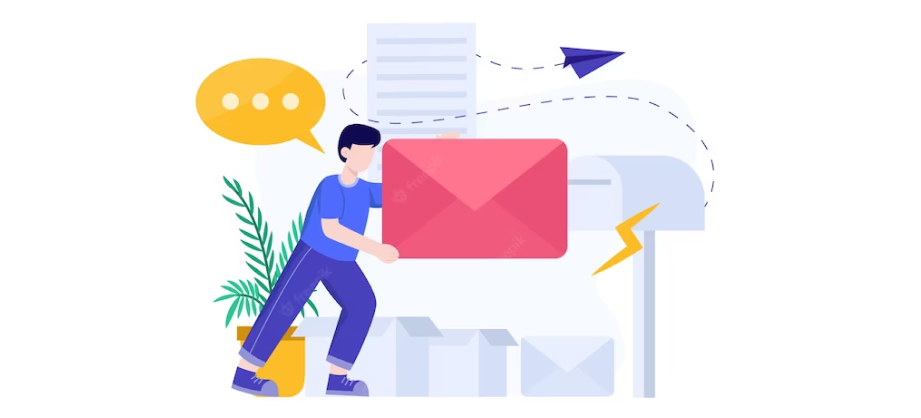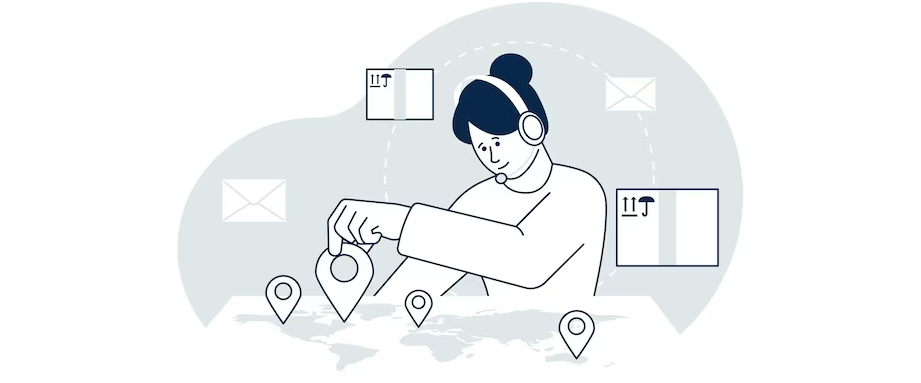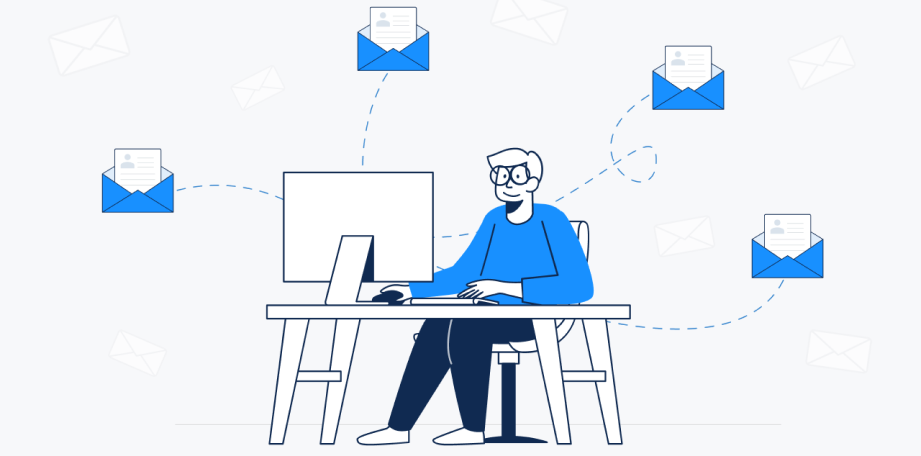Introduction to email outreach
Email outreach is a marketing and communication strategy that involves reaching out to individuals or businesses via email to promote a product or service, establish relationships, or build brand awareness. It is a cost-effective and scalable method of communication that can help businesses connect with potential customers or partners.
The key to successful email outreach is to create personalized and engaging emails that are relevant to the recipient's interests or needs. This can involve researching the target audience, understanding their pain points, and crafting messaging that resonates with them.
Email outreach can be used for a variety of purposes, including lead generation, sales, networking, content promotion, and link building. It can be challenging to stand out in a crowded inbox, but with careful planning, compelling content, and a strategic approach, email outreach can be a powerful tool for achieving your marketing and communication goals.
Importance of having the right email address

Having the right email address is crucial for effective communication and successful outreach efforts. Using an incorrect or outdated email address can lead to bounced emails, which can damage your sender reputation and prevent your messages from reaching the intended recipient.
On the other hand, having the right email address ensures that your message reaches the intended recipient and increases the likelihood of a response. It also helps to establish credibility and professionalism, as it demonstrates that you have taken the time to research and find the correct contact information.
Having the right email address is particularly important for business purposes, such as sales outreach, lead generation, and networking. It allows you to connect with the right people in your target market, build relationships, and ultimately achieve your business goals.
In summary, having the right email address is essential for real time communication and successful outreach efforts, and can have a significant impact on your ability to achieve your marketing and business objectives.
Traditional methods of finding email addresses
Traditional methods of finding email addresses include:
Business Cards : Collecting business cards from individuals or networking events is a common way to obtain email addresses.
Directories : Online or print directories can provide contact information for individuals or businesses, including email addresses.
Company Websites : Checking the "contact us" or "about us" pages on a company's website can often provide contact information, including email addresses.
Social Media : Social media platforms like LinkedIn, Facebook, and Twitter can be useful for finding email addresses, as many users include their contact information in their profiles.
Email Lookup Services : There are a variety of email lookup services available that can help you find email addresses based on a person's name, company, or other identifying information.
While these traditional methods can be effective, they can also be time-consuming and may not always provide accurate or up-to-date information. It is important to use a combination of methods and verify email addresses before sending outreach emails to ensure that they reach the intended recipient
Advanced methods for finding email addresses

Advanced methods for finding email addresses include:
Email Search Tools : Email search tools like soopr.io, Voila Norbert, and RocketReach these email finder tools can help you find email addresses based on a person's name, company, or domain.
Google Search : Conducting a targeted Google search with specific keywords, such as a person's name, company, or job title, can sometimes yield email addresses listed on public websites.
Email Verification Services : Email verification services like soopr.io, BriteVerify, and Kickbox can help you verify the accuracy of email addresses and improve deliverability rates.
LinkedIn : LinkedIn can be a valuable resource for finding email addresses, as many users include their contact information in their profiles.
Data Mining : Data mining involves using software or services to collect and analyze data from various sources, including social media platforms, websites, and public records, to obtain contact information, including email addresses.
It's important to keep in mind that some of these advanced methods may have ethical or legal implications, and it's crucial to respect individuals' privacy and comply with anti-spam laws. Additionally, using a personalized approach and building relationships with your target audience can increase the effectiveness of your email outreach efforts.
Tools and resources for finding email addresses
There are several tools and resources available for finding email addresses, including:
Email Lookup Services : Email lookup services like soopr.io, Voila Norbert, and RocketReach can help you find email addresses based on a person's name, company, or domain.
LinkedIn : LinkedIn can be a valuable resource for finding email addresses, as many users include their contact information in their profiles.
Google Search Operators : Google search operators can help you narrow down your search results and find email addresses listed on public websites.
Email Verification Services : Email verification services like soopr.io, BriteVerify, and Kickbox can help you verify the accuracy of email addresses and improve deliverability rates.
Data Mining Tools : Data mining tools like Webhose.io, Import.io, and Scrapinghub can help you collect and analyze data from various sources, including social media platforms, websites, and public records, to obtain contact information, including email addresses.
Email Finding Browser Extensions : Browser extensions like Clearbit Connect and FindThatLead can help you find email addresses directly from your browser.
It's important to keep in mind that some of these tools may have ethical or legal implications, and it's crucial to respect individuals' privacy and comply with anti-spam laws. Additionally, using a personalized approach and building relationships with your target audience can increase the effectiveness of your email outreach efforts.
Tips for crafting effective outreach emails

Here are some tips for crafting effective outreach emails:
- Keep it Personal: Address the recipient by name and use a conversational tone to make the email feel more personal and engaging.
- Be Clear and Concise: Get straight to the point and clearly communicate the purpose of your email in a concise and easy-to-understand manner.
- Offer Value: Provide value to the recipient by offering a solution to a problem they may be facing or sharing relevant information that can benefit them.
- Use a Call to Action: Include a clear call to action, such as asking the recipient to schedule a meeting or reply to your email, to encourage engagement and response.
- Customize Your Email: Customize your email to the recipient's interests, needs, and preferences to make it more relevant and increase the chances of a response.
- Keep it Professional: Maintain a professional tone and avoid using slang or overly casual language, especially if you are reaching out to a potential business partner or client.
By following these tips, you can craft effective outreach emails that are more likely to engage and convert your target audience.
Best practices for email outreach success
Here are some best practices for email outreach success:
To create an effective email outreach strategy, it's important to keep a few key principles in mind. First, it's essential to know your audience. Conduct research to understand their needs, preferences, and pain points, and tailor your outreach accordingly. Personalization is another key factor, as it can help make your emails feel more relevant and engaging to the recipient. Additionally, keeping your emails short, simple, and easy to read, with a clear and concise message, can increase their effectiveness.
Offering something of value to the recipient, such as a solution to a problem they may be facing or helpful information related to their interests, can also help increase engagement. Including a clear and actionable call-to-action can further encourage the recipient to take the desired action, such as scheduling a meeting or responding to your email. Following up after sending the initial email can also help increase the chances of a response and maintain engagement.
It's important to test different email templates and subject lines, track your performance, and refine your approach based on the results to optimize your outreach strategy. By keeping these principles in mind, you can create an email outreach strategy that effectively reaches your target audience and drives the desired results.
Conclusion
Crafting effective outreach emails is essential to increase response rates and achieve outreach goals. By using personalized messages, offering value, providing clear call-to-action, and testing and refining your approach, you can optimize your email outreach and enhance your chances of success.
Keep your emails concise and engaging, tailored to the preferences and interests of your target audience. Follow up with recipients and track performance to identify areas for improvement and refine your strategy. With the right mindset and approach, you can create effective outreach emails that connect with your audience and achieve desired outcomes.





